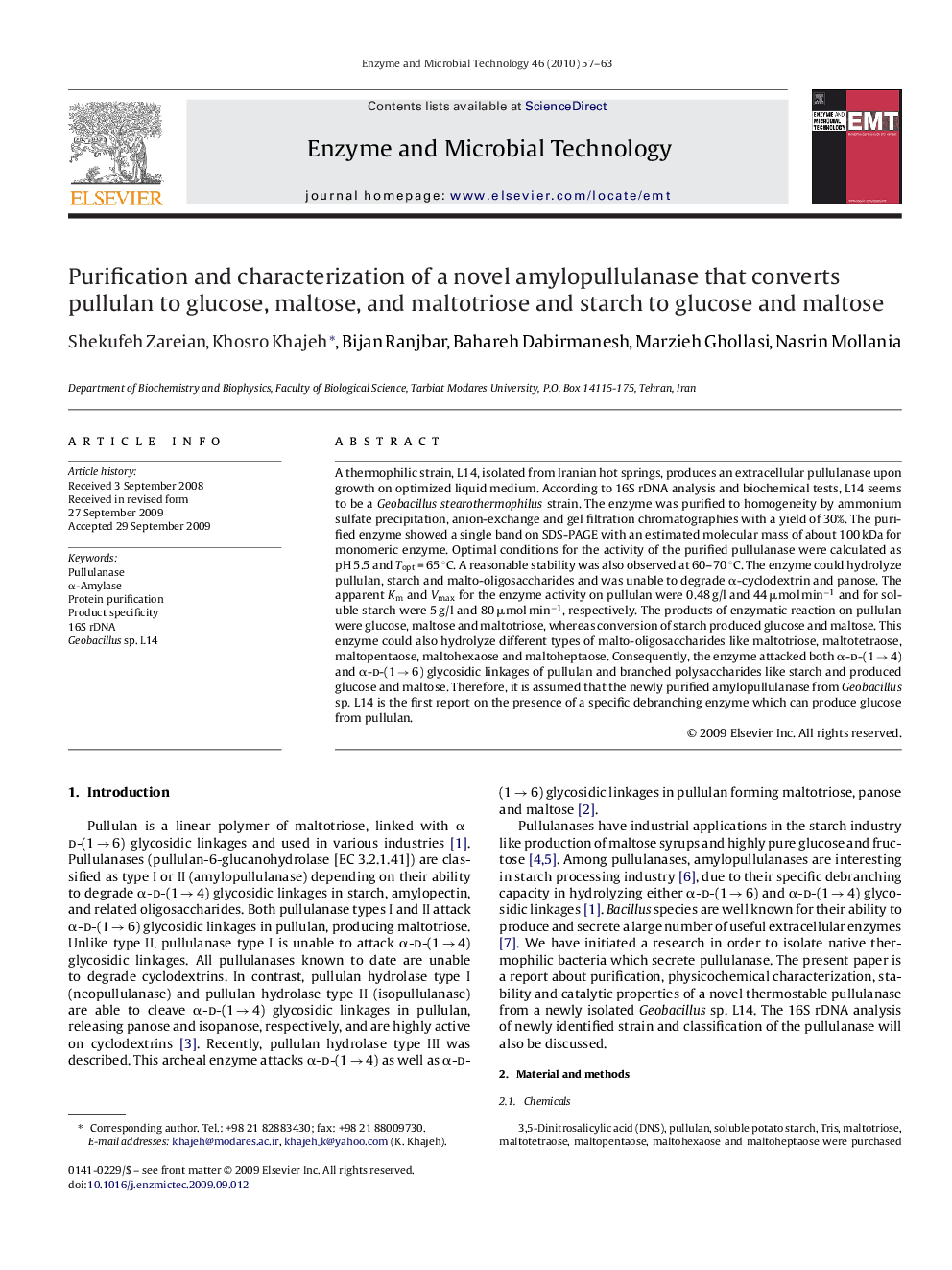| Article ID | Journal | Published Year | Pages | File Type |
|---|---|---|---|---|
| 17709 | Enzyme and Microbial Technology | 2010 | 7 Pages |
A thermophilic strain, L14, isolated from Iranian hot springs, produces an extracellular pullulanase upon growth on optimized liquid medium. According to 16S rDNA analysis and biochemical tests, L14 seems to be a Geobacillus stearothermophilus strain. The enzyme was purified to homogeneity by ammonium sulfate precipitation, anion-exchange and gel filtration chromatographies with a yield of 30%. The purified enzyme showed a single band on SDS-PAGE with an estimated molecular mass of about 100 kDa for monomeric enzyme. Optimal conditions for the activity of the purified pullulanase were calculated as pH 5.5 and Topt = 65 °C. A reasonable stability was also observed at 60–70 °C. The enzyme could hydrolyze pullulan, starch and malto-oligosaccharides and was unable to degrade α-cyclodextrin and panose. The apparent Km and Vmax for the enzyme activity on pullulan were 0.48 g/l and 44 μmol min−1 and for soluble starch were 5 g/l and 80 μmol min−1, respectively. The products of enzymatic reaction on pullulan were glucose, maltose and maltotriose, whereas conversion of starch produced glucose and maltose. This enzyme could also hydrolyze different types of malto-oligosaccharides like maltotriose, maltotetraose, maltopentaose, maltohexaose and maltoheptaose. Consequently, the enzyme attacked both α-d-(1 → 4) and α-d-(1 → 6) glycosidic linkages of pullulan and branched polysaccharides like starch and produced glucose and maltose. Therefore, it is assumed that the newly purified amylopullulanase from Geobacillus sp. L14 is the first report on the presence of a specific debranching enzyme which can produce glucose from pullulan.
